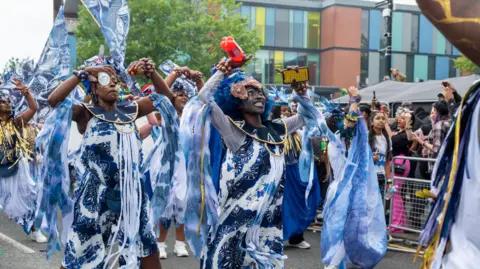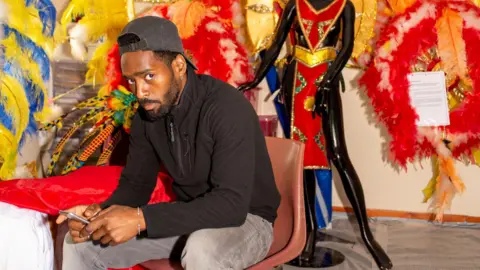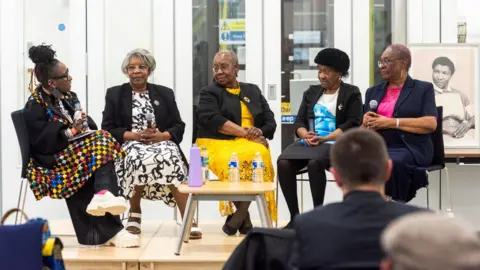Caribbean life celebrated by photo collection
 Solomon Charles-Kelly
Solomon Charles-KellyA new photography collection that captures the lives of a city's African and Caribbean community has been added to a national archive.
Images of Chapeltown in north Leeds have been uploaded to Historic England's website and can be viewed by the public.
They include scenes of everyday life and stories of its residents, and have been included to challenge "negative perceptions" of the area.
Project leader and photographer Solomon Charles-Kelly said it had been "an invaluable chance to celebrate Chapeltown’s past, present, and future".
The idea came from old photos of the Leeds West Indian Centre in 1983, which were rediscovered and used in an exhibition curated by Historic England.
Chapeltown was where post-war Caribbean immigrants - including the Windrush generation - settled and founded the country's second-largest carnival.
 Solomon Charles-Kelly
Solomon Charles-KellyThe celebration features in Mr Charles-Kelly's collection, alongside other community gatherings such as an evening with retired nurses from the Windrush generation.
Mr Charles-Kelly said he had aimed to encourage families to take part in the image-making process and explore their own local histories.
"The project allowed me to connect with the place I have always called home, and to document the stories and experiences of the African and Caribbean community that, to me, form its heart," he said.
“This residency was an invaluable chance to celebrate Chapeltown’s past, present, and future through a body of work that reflects the area's richness, diversity, and resilience.”
 Solomon Charles-Kelly
Solomon Charles-KellyThe project was supported by the Leeds-based non-profit Lens Lab Project.
Historic England said it helped to ensure the national archive reflected "everyone's heritage".
Charlotte Hill, archive engagement and projects manager at Historic England, said: “Solomon’s work is a fantastic addition to the Historic England Archive, creating a legacy for the Caribbean and African community in Chapeltown today and for generations to come."
Chapeltown is a Victorian suburb that was one of the most desirable parts of industrial Leeds before wealthy business families began to move further out of the city. They were replaced in the 20th Century by immigrant communities, firstly Jews from eastern Europe who were fleeing persecution.
The Afro-Caribbean population grew after the end of World War Two, when Commonwealth servicemen decided to remain in the country. They were joined by new arrivals who were recruited to plug labour shortages. The first generation of Jamaicans to settle in Chapeltown came during the post-war period, and the local Jamaica Society still has its headquarters on Chapeltown Road.
Listen to highlights from West Yorkshire on BBC Sounds, catch up with the latest episode of Look North or tell us a story you think we should be covering here.
